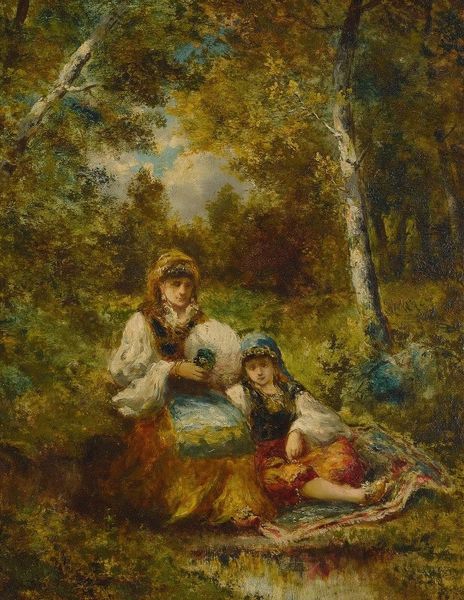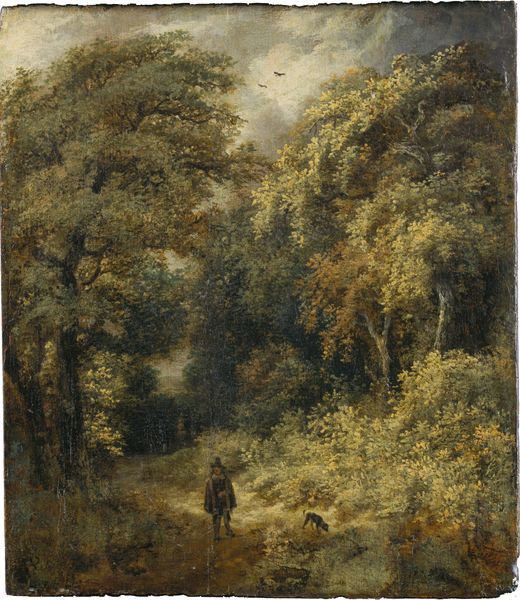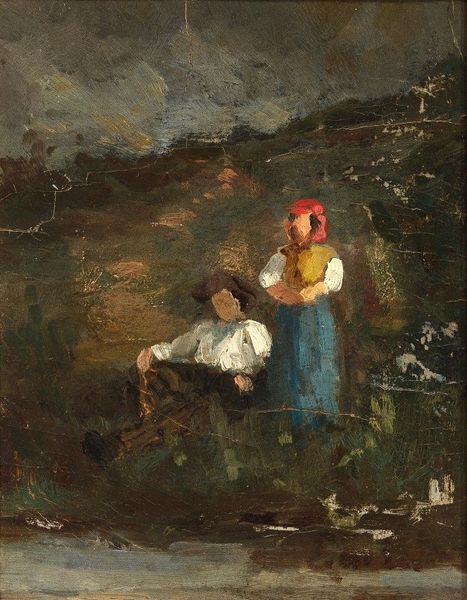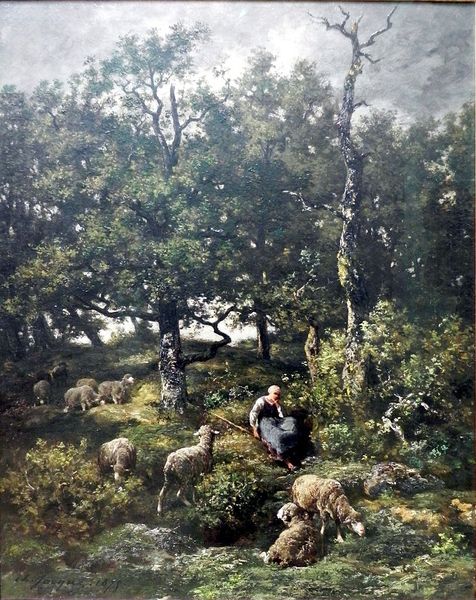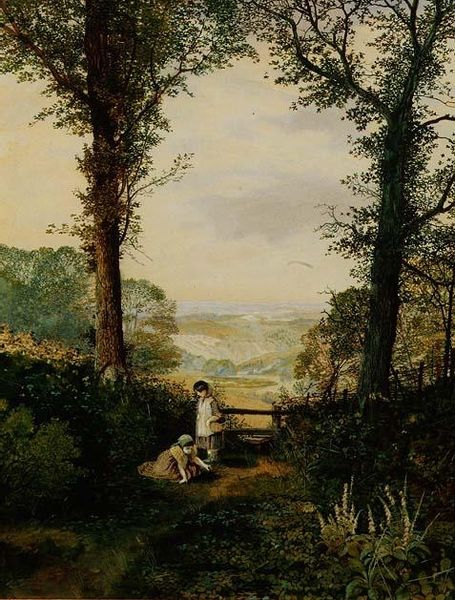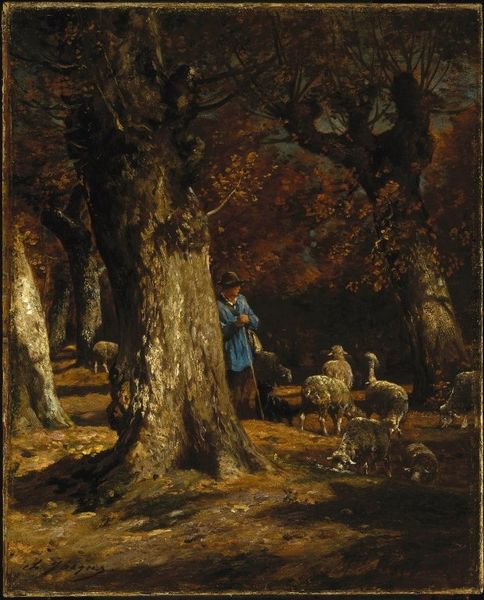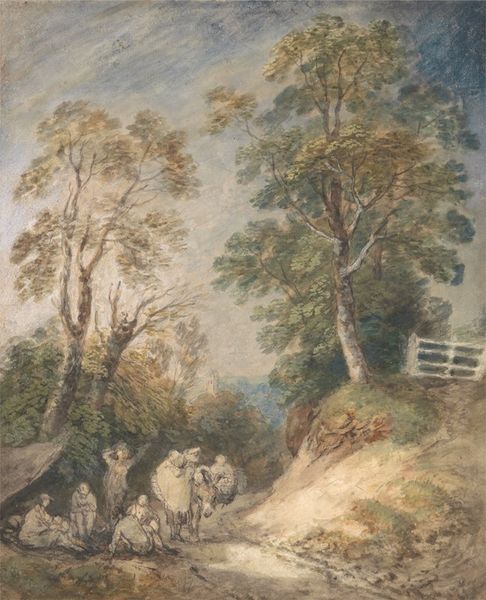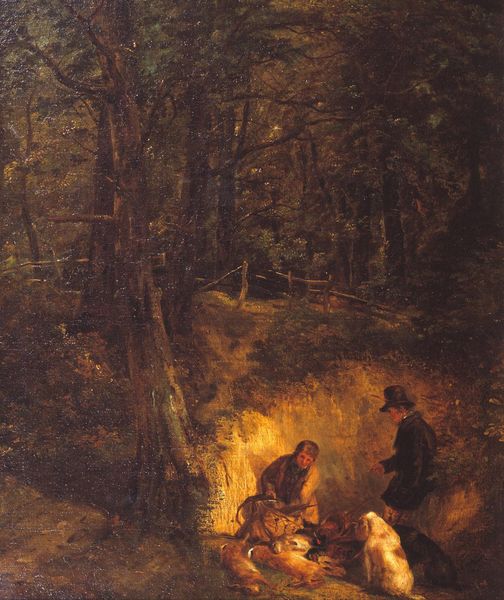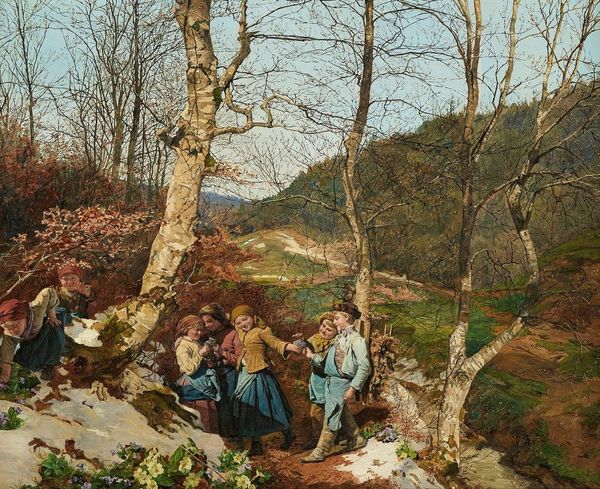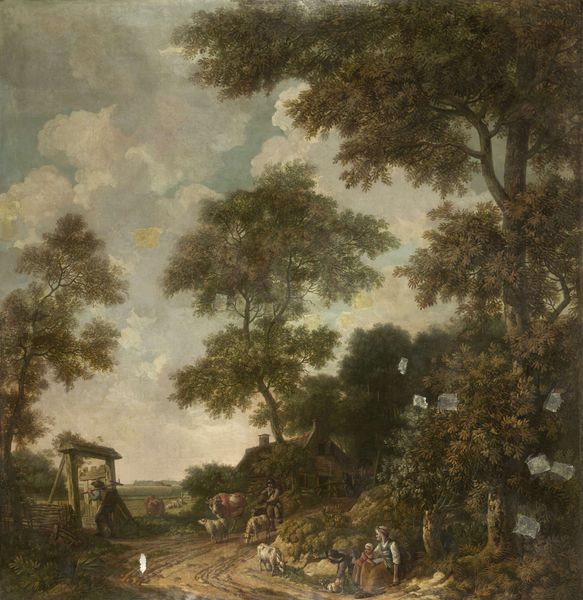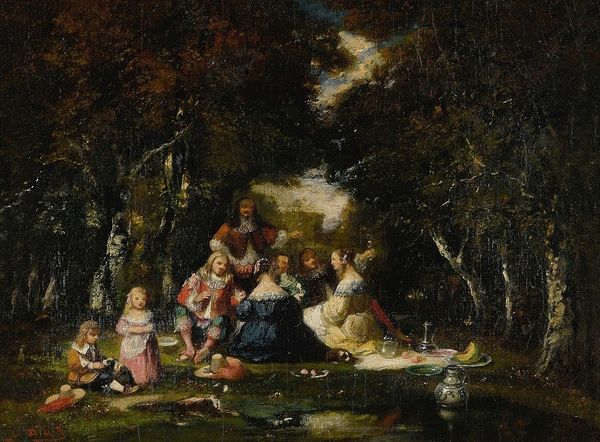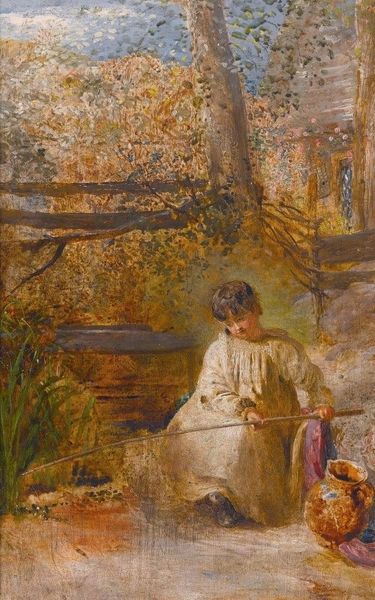
oil-paint
#
oil-paint
#
landscape
#
impressionist landscape
#
figuration
#
oil painting
#
romanticism
#
genre-painting
Copyright: Public Domain: Artvee
Curator: Looking at "Four Bohemians and Dogs Near Rocky Pools," painted by Narcisse Virgilio Díaz, what strikes you first? Editor: The overall composition feels intentionally dark, like a secretive gathering amidst a vast, undefined wilderness. The artist utilizes light quite selectively, doesn’t he? Curator: Indeed. Diaz, influenced by the Barbizon school, often depicted romanticized views of nature and rural life. In mid-19th century France, the image of the bohemian, or Romani, was shrouded in the same exotic mystery as these dark landscapes. How do you read their role? Editor: There is something very deliberate about how these figures, grouped as they are, establish the emotional register here. Notice the painterly treatment of their clothes. Their inclusion against such an impenetrable setting almost certainly dictates a mood that seems contemplative, isolated. Curator: This intersects with Romanticism’s prevailing interest in both individualism and nature's sublimity. In that sense, this could easily speak to a contemporary art audience concerned with nature’s power over mankind. It also hints at changing class structures when it came to the reception of the artist, nature, and Romani at this historical moment. Editor: Yes, absolutely, the materiality amplifies the drama here—how Diaz coaxes gradations of light from those deep blacks, and makes our eye settle specifically on the chromatic variations in the robes and foliage. Everything hinges on these light patterns that reveal human subjects set apart and against something massive, perhaps unconquerable. Curator: Diaz sold well during his lifetime and gained success particularly after the 1840s. As paintings like this entered the collections of industrialists, what statements were being made about who these wealthy collectors were and the aesthetic environment they hoped to cultivate? Editor: Ultimately, Diaz uses the technical elements available to him, creating a unified atmosphere—one of introspective experience—to represent what could easily turn into nostalgia when perceived by that rising class. Curator: That helps contextualize the choices Diaz made to construct an imagery suitable for the modern, newly wealthy audience. Editor: Examining Diaz's decisions, what prevails, beyond any potential socio-historical context, is how he controls what we see, what feeling overtakes us when viewing it.
Comments
No comments
Be the first to comment and join the conversation on the ultimate creative platform.
